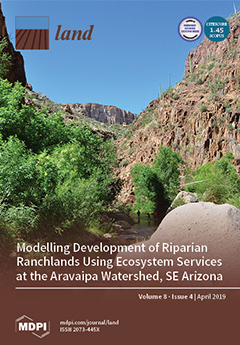Benadering van de toe te passen afstand van landbouwwegen in ruilverkavelingen in Limburg
De bodemgesteldheid van het ruilverkavelingsblok "Amerkant" c.a.
Saneeringsplan Hedel
In het Zuiden van de Bommeierwaard komen enkele dorpen Voor, die zwaar getroffen werden door het oorlogsgeweld. Bovendien behoort de Bommelerwaard tot de gebieden, waarin zich reeds lang zorgwekkende toestanden voordoen. Bij den noodzakelijken wederopbouw is het standpunt der Regeering, dat er zooveel mogelijk naar gestreefd dient te worden, waar noodig, tegelijkertijd een saneering door te voeren. Vandaar dat in dit gebied begonnen is met de voorbereidende werkzaamheden vöpr een ruilverkaveling.
Sociaal-economische schets van het ruilverkavelingsgebied Steenwijksmoer, gemeente Coevorden
Een sociaal - economisch onderzoek, in het ruilverkavelingsgebied "De kleine Aa"
De bodemgesteldheid van een deel van het ruilverkavelingsgebied Linde-Zuid
Ruilverkavelingsgebied Kruisland - Wouw : de bodemgesteldheid
Ruilverkavelingsgebied Bathmen : bodemgesteldheid en bodemgeschiktheid
The Effect of the Gully Land Consolidation Project on Soil Erosion and Crop Production on a Typical Watershed in the Loess Plateau
The Gully Land Consolidation Project (GLCP) was launched to create more arable land by excavating soil from the slopes on both sides of gullies, combined with simultaneous comprehensive gully prevention and control measures. The purpose of the GLCP is to increase crop production and reduce soil erosion to achieve ecological and agricultural sustainability.
Increasing Sugar Production in Indonesia through Land Suitability Analysis and Sugar Mill Restructuring
Indonesia is the fourth most populated country in the world with an annual population growth rate of 1.3%. This growth is accompanied by an increase in sugar consumption, which is occurring at an annual rate of 4.3%. The huge demand for sugar has created a large gap between sugar production and demand. Indonesia became the world’s largest sugar importer in 2017–2018. Sugarcane farmers have an important role in sugar production. They are facing problems with declining sugarcane productivity and arable land decreasing.
From “Land to the Tiller” to the “New Landlords”? The Debate over Vietnam’s Latest Land Reforms
Between Vietnam’s independence and its reunification in 1975, the country’s socialist land tenure system was underpinned by the principle of “land to the tiller”. During this period, government redistributed land to farmers that was previously owned by landlords. The government’s “egalitarian” approach to land access was central to the mass support that it needed during the Indochinese war.




